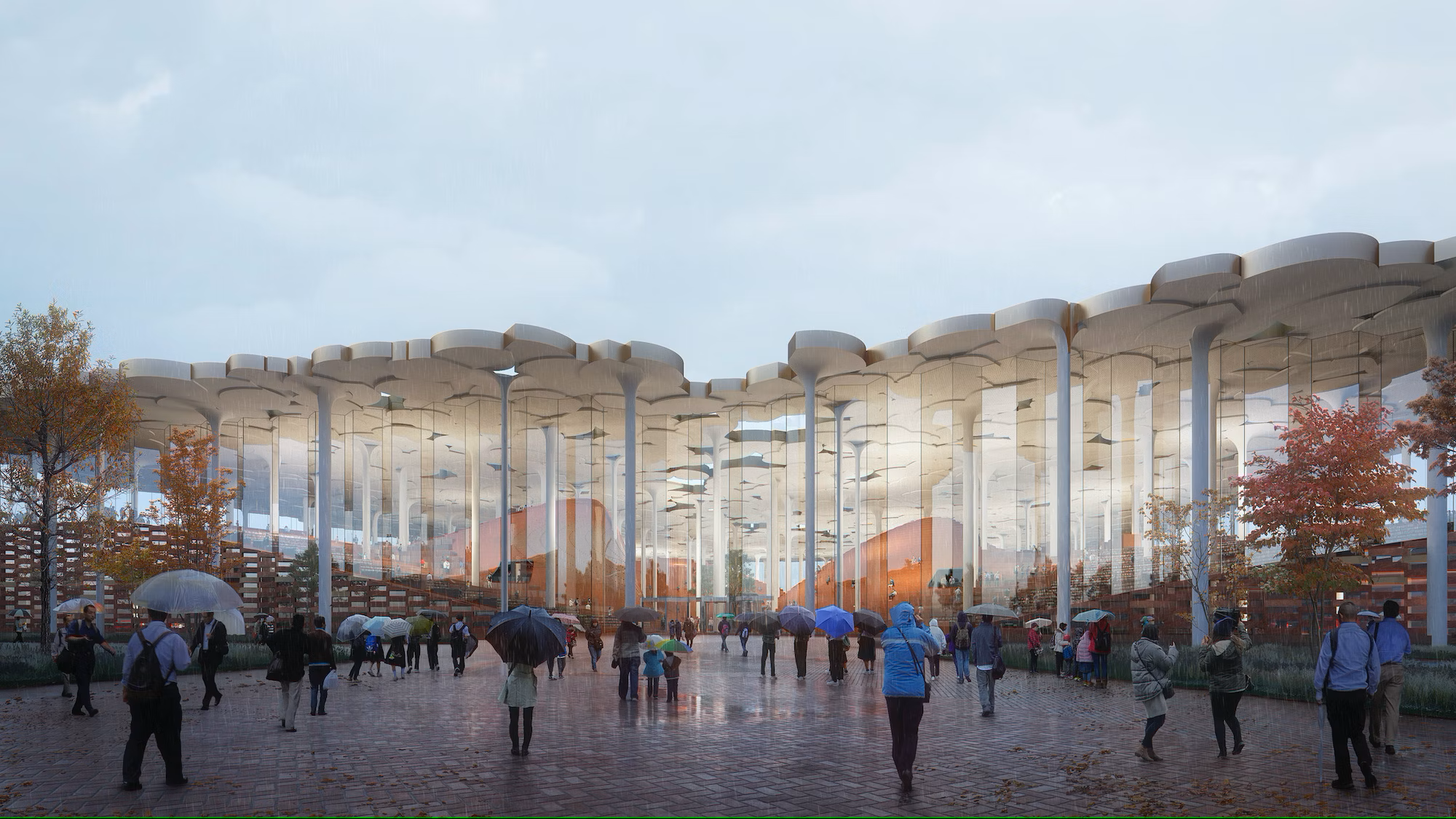The World’s Largest Library Reading Space
The Beijing sub-centre library, designed by Snøhetta in partnership with ECADI, is set to become a landmark project that sets new standards for library design in China and beyond. Due to complete in early 2024, the library is not only a space for learning and knowledge-sharing but also a celebration of Beijing’s rich cultural heritage and artistic history.
Snøhetta was commissioned to design the new Sub-Centre Library in Beijing following an international design competition win in 2018. The architectural, landscape, and interior design have been developed in partnership with local partner ECADI, and construction began in 2020. The project’s most prominent feature is the ginkgo forest-like canopy, which extends from the sculpted reading landscape upwards to support the roof. When completed, this will be China’s first self-supporting glass facade project.
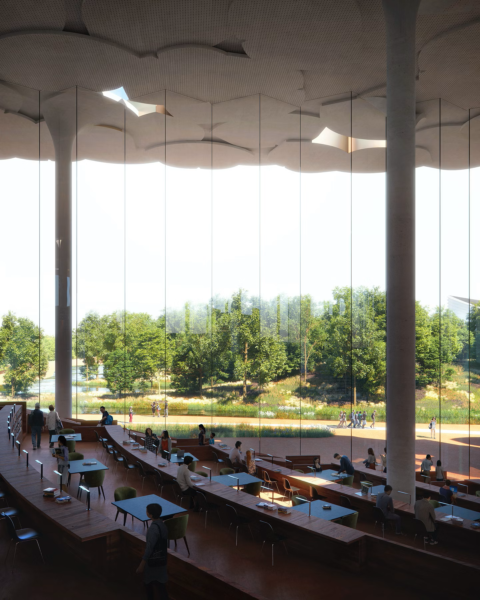
Photo Credit: Plomp
The library’s design prioritizes openness and inclusion, with a grand forest-inspired canopy covering and permeating throughout the whole library. The library’s interactions are visible to passers-by, inviting them into the amphitheatre-like open space. The library is designed to encourage learning, information exchange, and open discussions in a space that celebrates China’s rich history of science, art, and performance. To this end, the central valley forms the backbone of the library, serving as the main circulation from the north side to the south side of the building and guiding people towards all relevant spaces on top of and under the reading landscape.
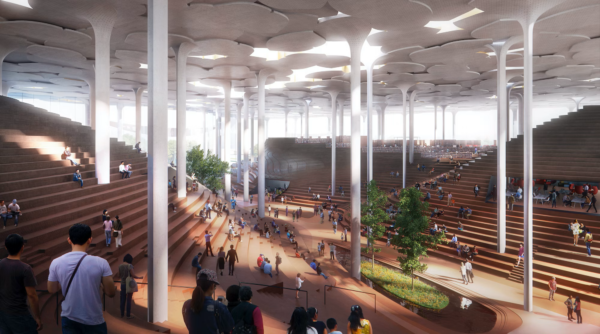
Photo Credit: Plomp
The library’s design challenges conventional library designs, featuring technology-driven designs and locally-sourced materials. The stepped landscape area under the roof serves as an informal resting zone where people can sit down “under a tree” and read. The roof has integrated photovoltaic (BIPV) construction elements, which use prime sun exposure for renewable energy production, and an overhang to reduce solar gain. The glass has been lowered on the eastern and western walls, and complimented with an active sun-shading device on the southern and western façades. The project used modular components with a rationalized structural grid to reduce the need for customization for both the columns and the roof.
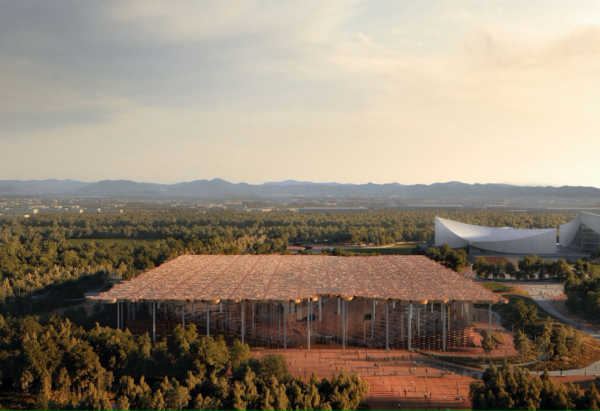
Photo Credit: Plomp
The Beijing sub-centre library has been designed to be sustainable and environmentally friendly, aiming to set new standards for sustainable library design. Each tree column is also a building technology component containing a distributed technology system that controls the interior climate, lighting, acoustic comfort, and rainwater disposal. The roof also has an overhang to reduce solar gain. The glass height has been reduced on the walls facing east and west, as well as adding an active sun-shading device facing the south and west façade.
The glass itself is an insulated glass unit with Low-E- performance. All the major materials for the construction have been sourced locally, and the use of modular components with a rationalized structural grid has been used to reduce the need for customization for both the columns and the roof.
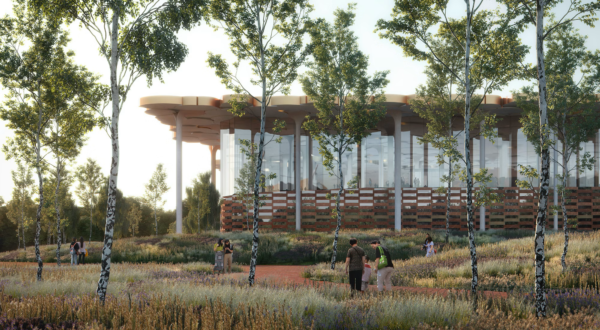
Photo Credit: Plomp
The project emphasizes a public space for learning, information exchange, and open discussions while celebrating Beijing’s heritage and rich cultural history of science, art, and performance. This has been emphasized by creating a common space as the centre of the library, highlighted by a prominent sculpted learning landscape that covers and permeates throughout the whole library.
Visitors can find their private place for reading and learning while always being connected to the larger common area, creating a feeling of being tall and low, open and closed, private and public all at the same time. There are no designated “sections” or categorizations of knowledge.
The library’s design is a testament to the importance of human interaction with the building. It is designed to be a space where people can come together to learn and share knowledge. The library’s unique design encourages visitors to interact with each other, creating a sense of community and belonging.

